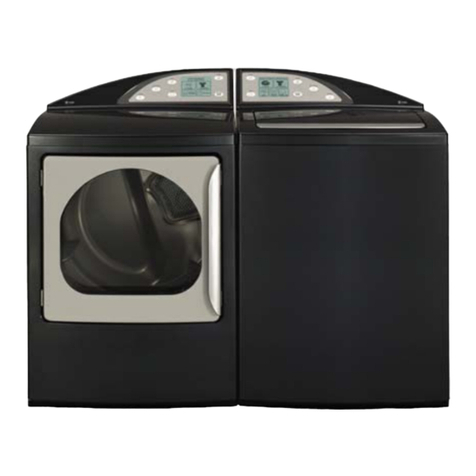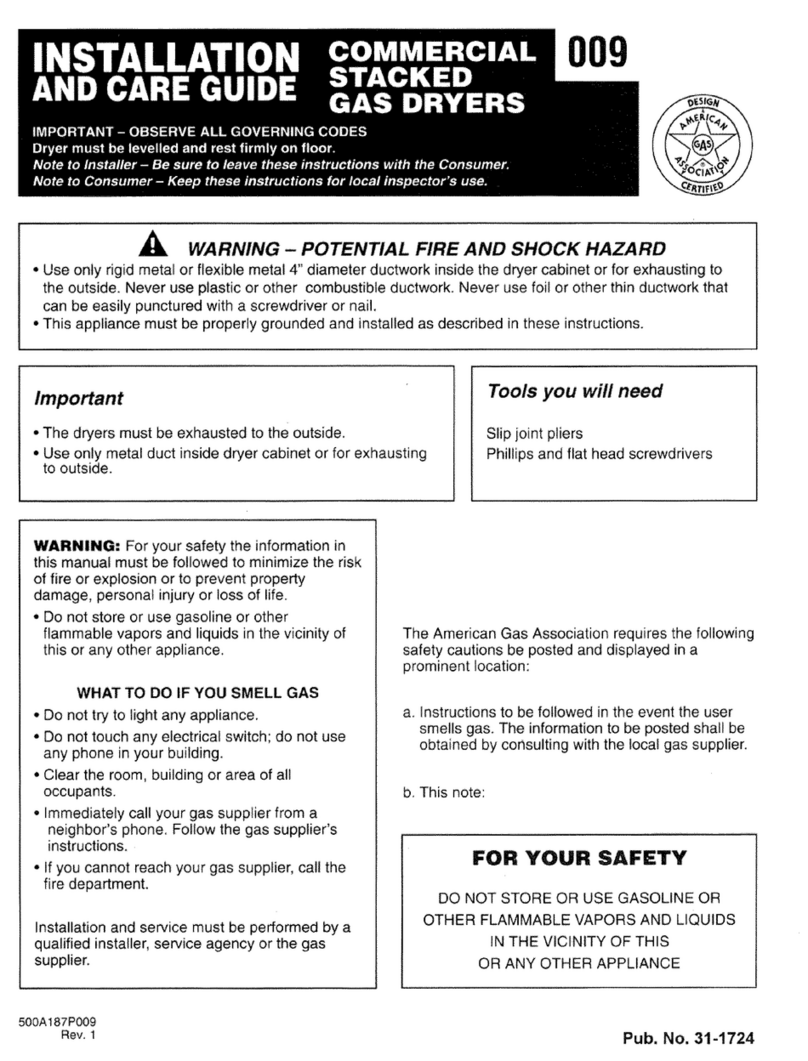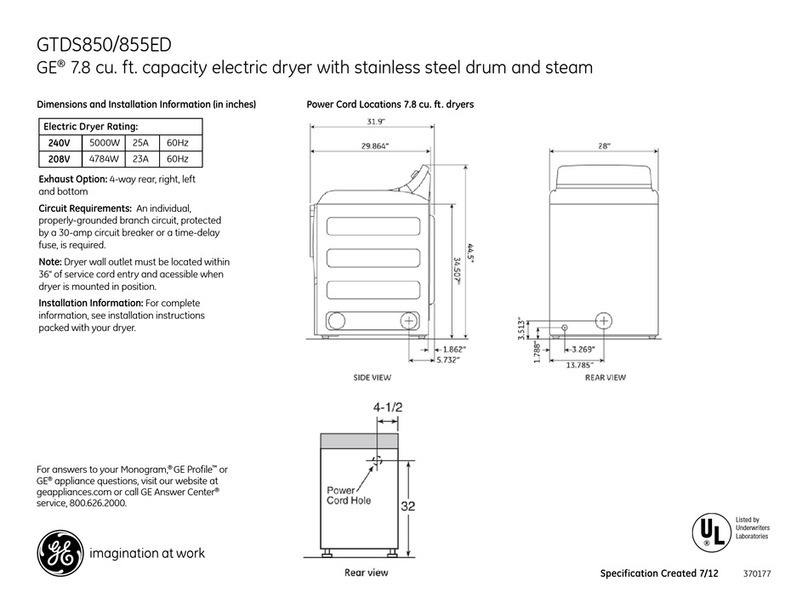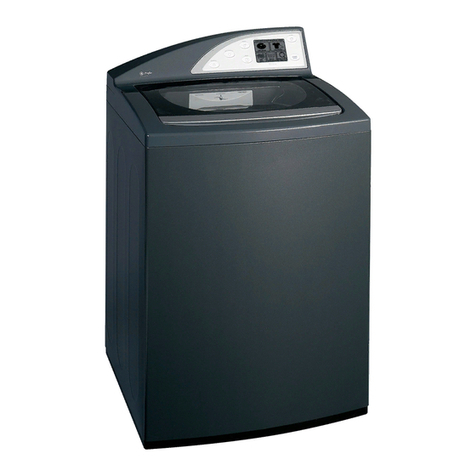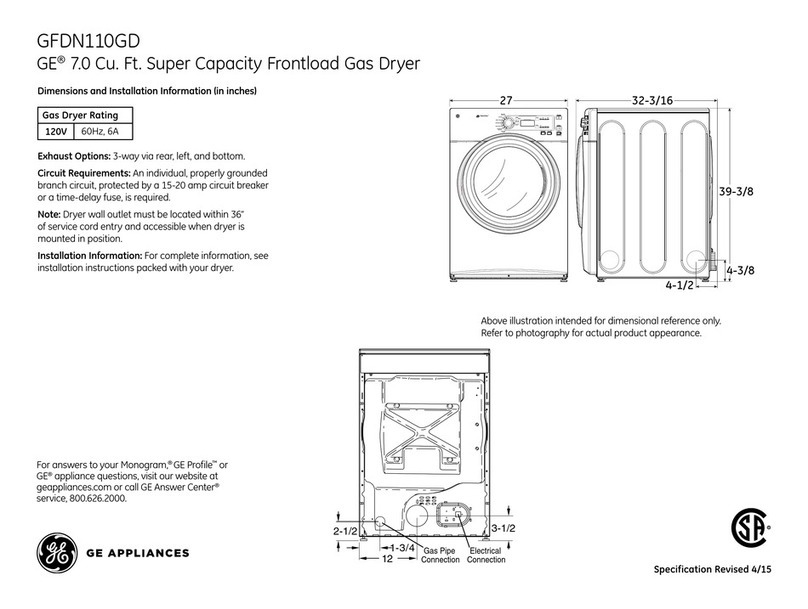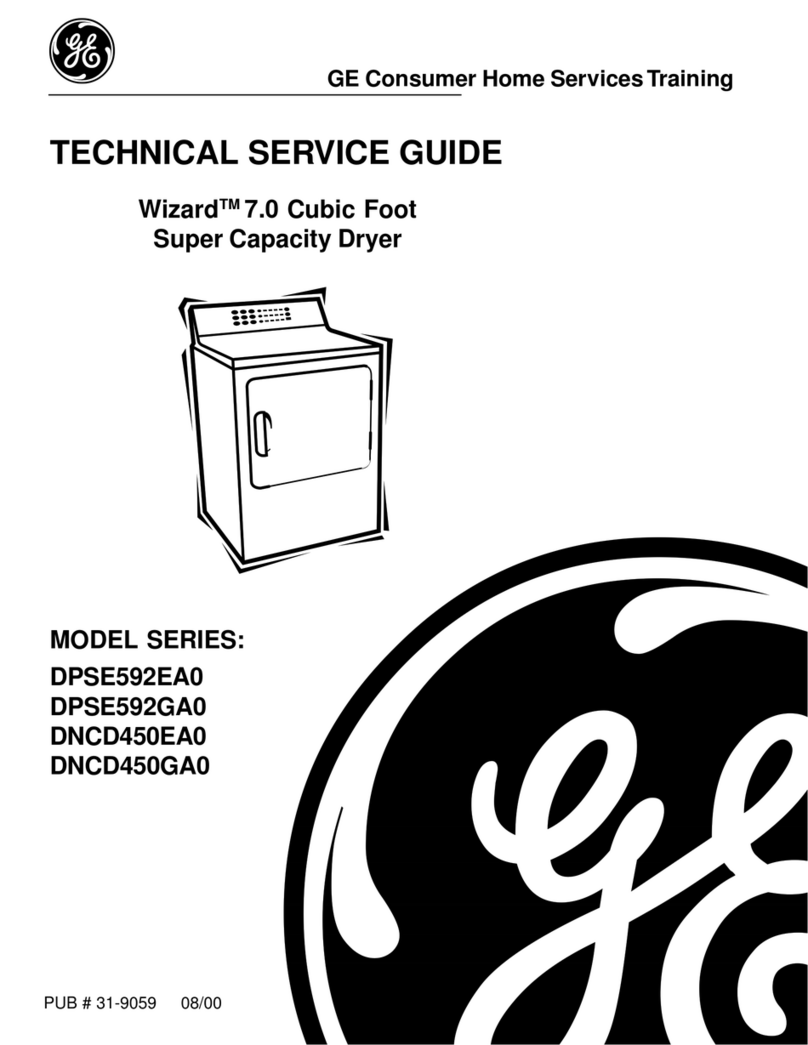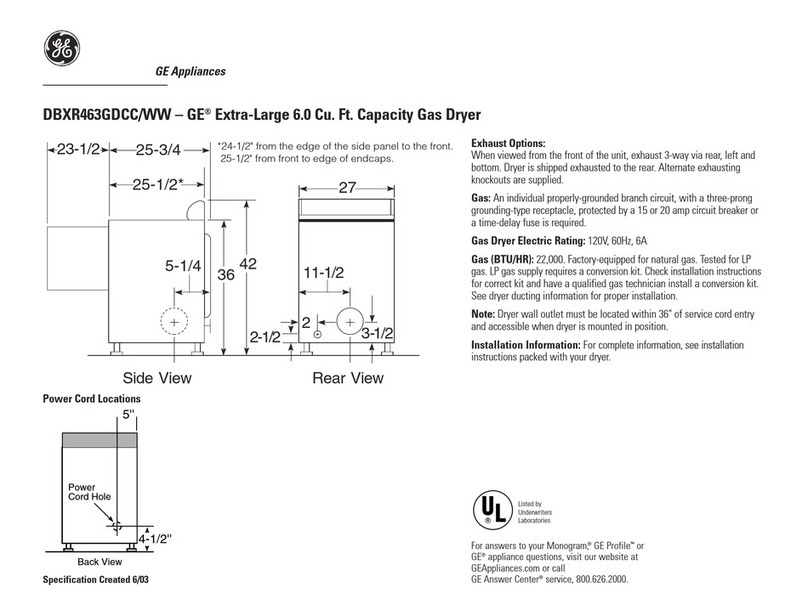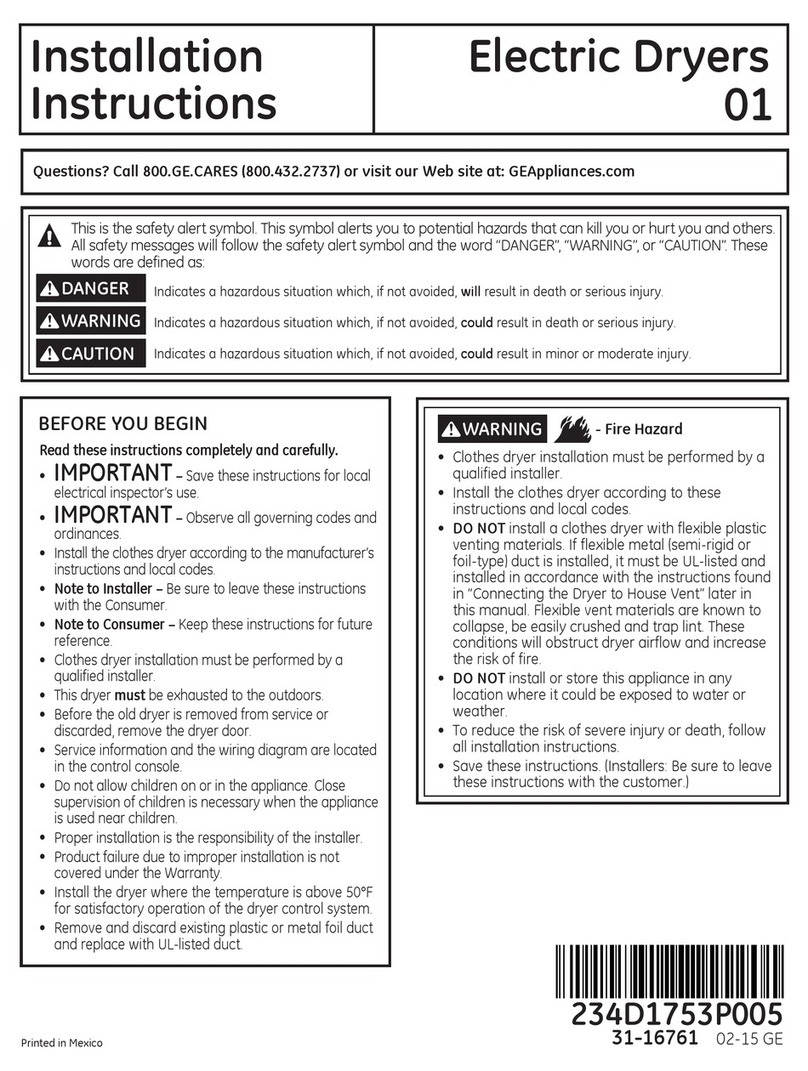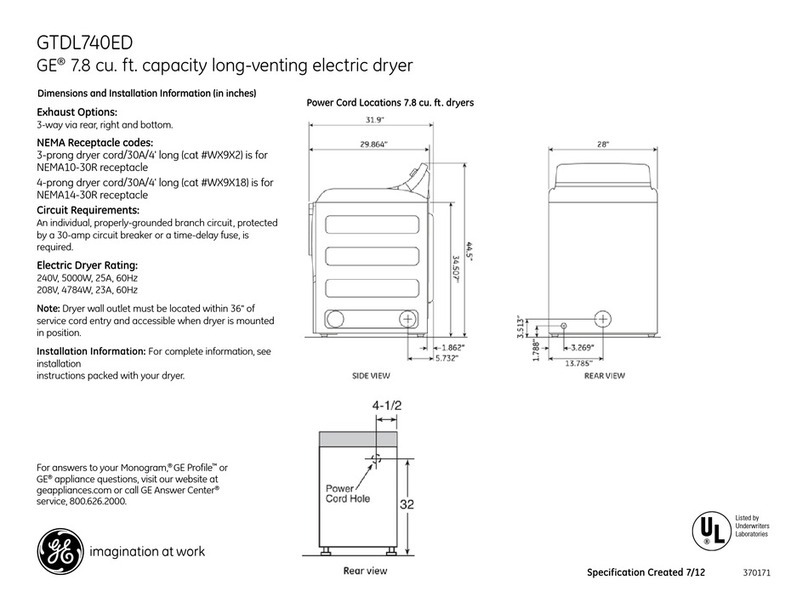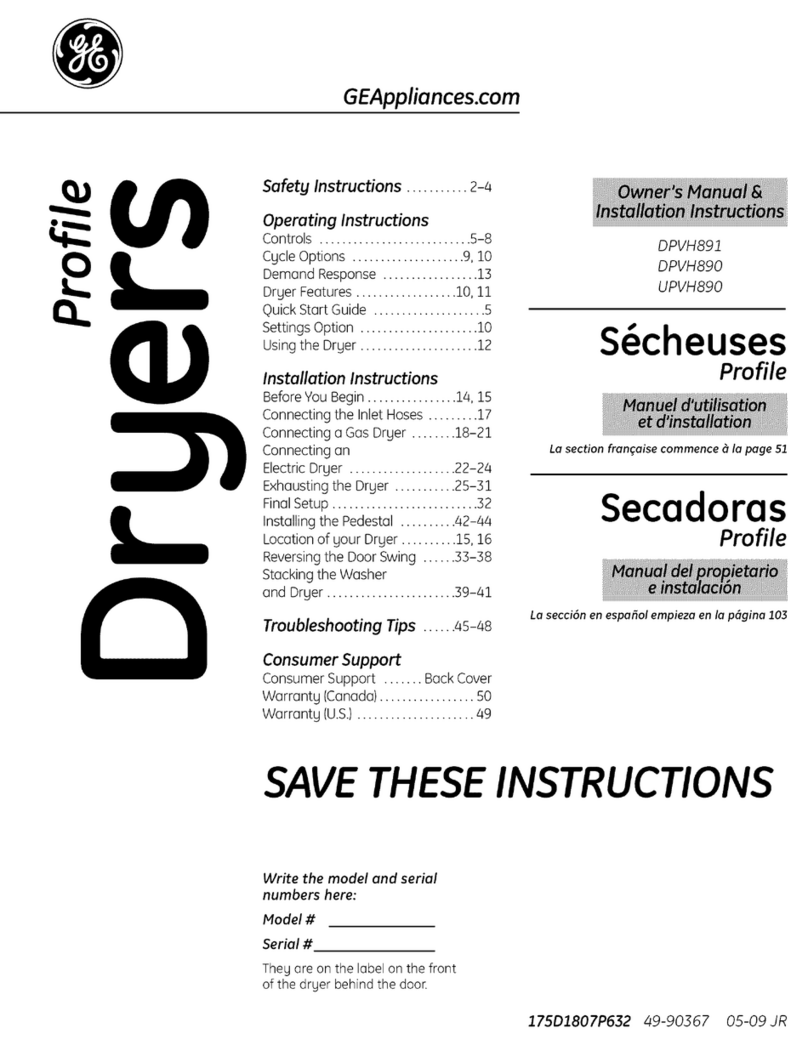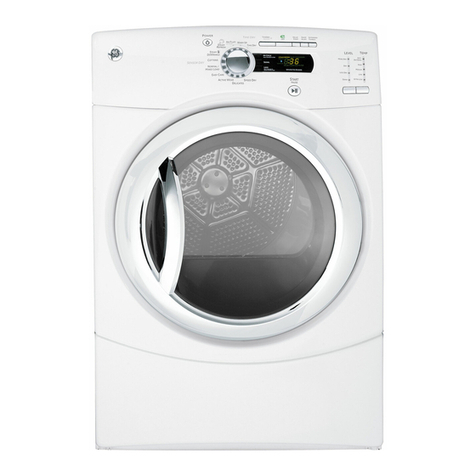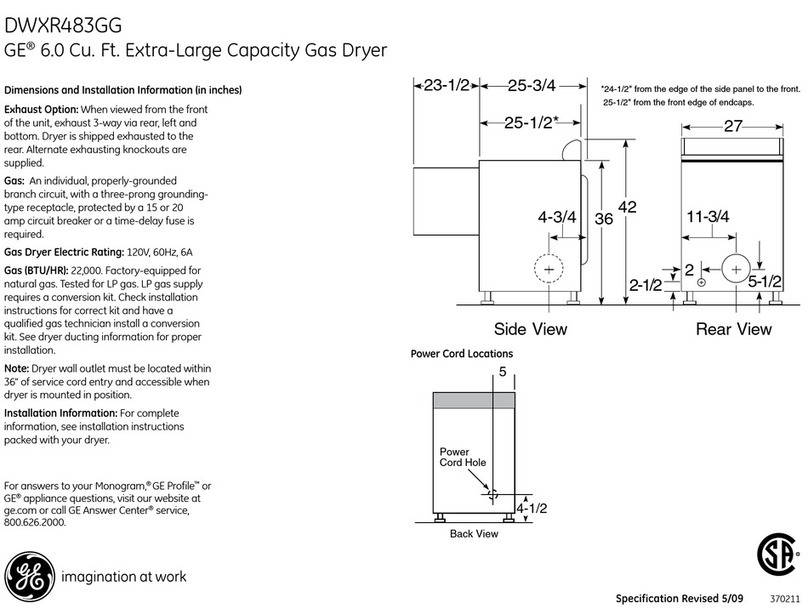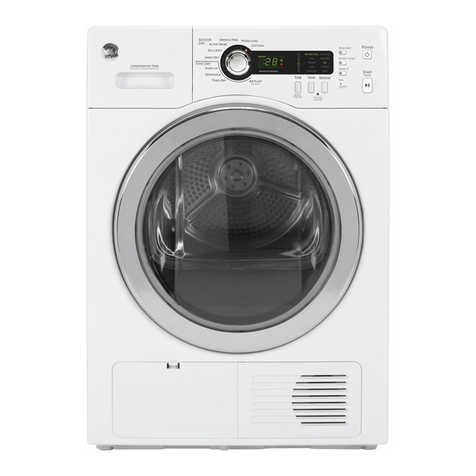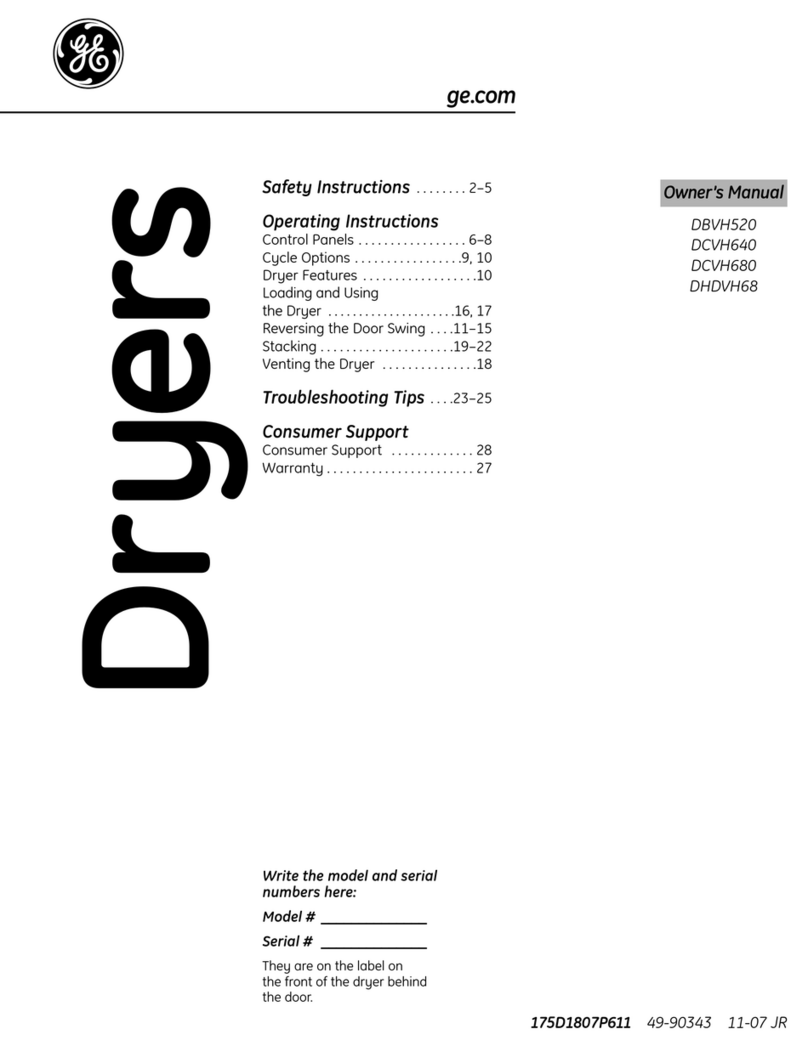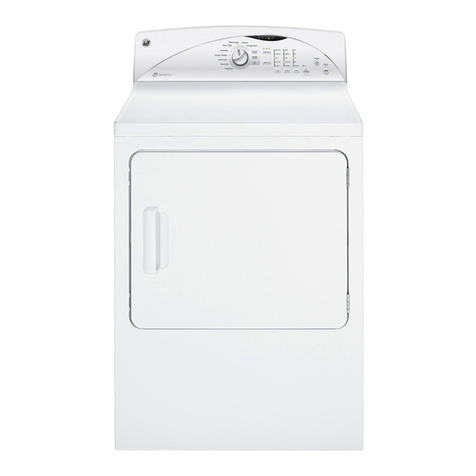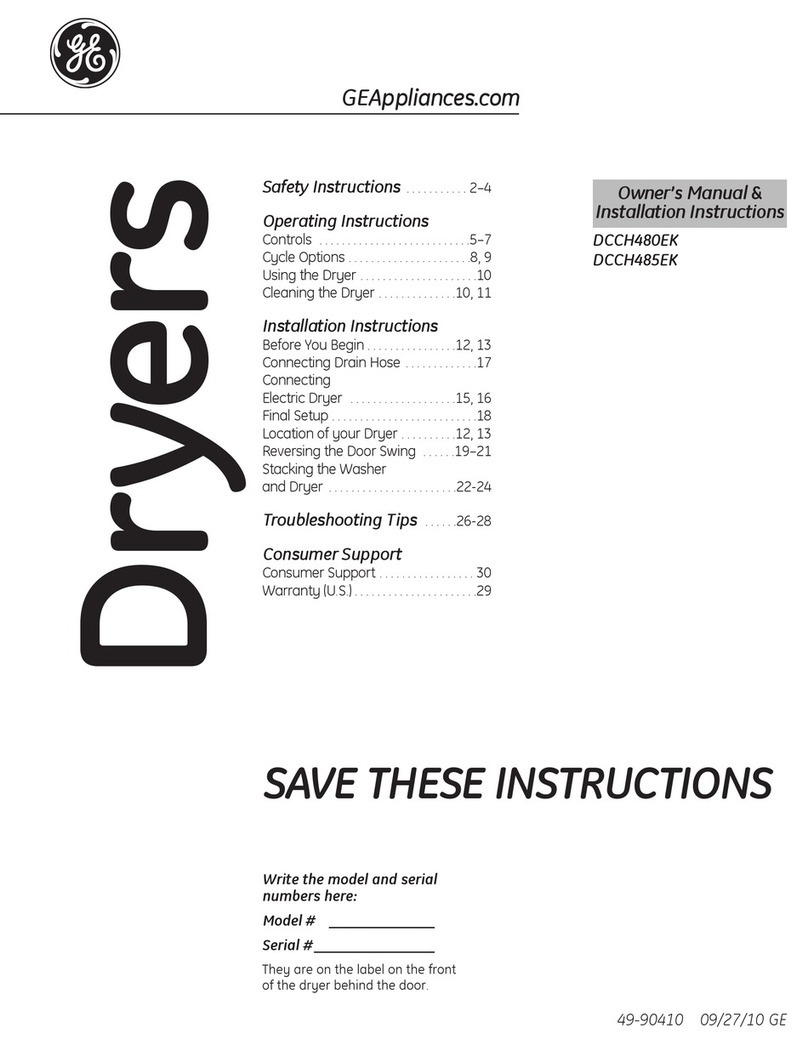
IMPORTANT SAFETY INSTRUCTIONS
Read all instructions before usingthis appliance. .
-
W~G-To reduce the risk
of fire, electric shock, or injury
to persons when using your
applianc~ followbasic precautions,
including the following:
.Use this appliance only for its
intended purpose as described in
this Use and Care Book.
●This dryer must be properIy
installed and located in
accordance with the Installation
Instructions before it is used. If
you did not receive an Installation
Instructions sheet with your dryer,
you can obtain one bycontacting
the service location nearest you.
—Properly ground to conform
with all governing codes and
ordinances. Follow details in
Installation Instructions.
—Locatewhere the temperature
is above 50”F.(10”C.)for
satisfactory operation of the
I, dryer control system. Do not
install or store the dryer where it
will be exposed to the weather.
–Connect to aproperly rated,
protected and sized power-supply
circuit to avoidelectrical overload.
—Exhausting to the outside is
STRONGLY RECOMMENDED
to prevent large amounts of
moisture and lint from being blown
into the room. Carefully followthe
ExhaustingDetails in the Installation
Instructions.
●When disconnecting this
appliance pull by the plug rather
than the cord to avoiddamage to
the cord orjunction of cord and
plug. Make sure that the cord is
located so that it will not be stepped
on, tripped over or otherwise
subjected to damage or stress.
●Do not repair or replace any
part of the appliance or attempt
any servicing unless specifically
recommended in this Use and
Care Book or in published user-
repair instructions that you
understand and have the skills to
carry out.
“JJU llUL UW IEW
containing rubbe
similar materials WUCII
bras,tennis shoes, gait
mas rugs,bibs,baby P
bus, et-c.)as these mah~ MMES ..,=. . , .,.
,. ..-x%x-!:.
melt or burn. AIso. SOI
“‘- ‘-’ ‘--- ‘--t to dry”articks -●Do not store items that may bti “~%.
w,phstic, or .-..4$.:.
~----%as padded or melt (such asiclothing, paper” , . .~
‘material, plastics or plastic - ‘f ;;.
r)sh~ bath containers, etc.) on top of the dryer-*’;.!n-
~* PWC ~ufingo~~tion
&w&mBL.I-*.. , .,,’..%:.J<a
materk@ when he&d, can under .
certain circumstances produce “
fire by spontaneous combustion.
●Garments labeled “D~ Away .~
From Heat” (such as lifejackets
containing Kapok) must not be put
in your dryer. ,
●Do not wash or dry articles
that havebeen cleaned in, washed
in, soaked in, or spotted with
combustibleorexplosivesubstances
(such as gasoline, degreasers,
@cleaning Solvenq kemsenel*)
which may giveoff vapors that
could igniteor explode.Do notuse
or store such substances on/or
around your washer and/or dryer
during operation.
●Any article on which you have
used acleaning solvent, or which
contains flammable materiak
(such as cleaning cloths, mops,
towels used in beauty salons,
restaurants or barber shops, etc.)
must not be placed in or near the
dryer until all traces of these
flammable liquids or solids and
their fimes havebeen removed.
There are many highly flammable
items used in homes such as:
acetone, denatured alcohol,
gasoline, kerosene, some
household cleaners, some spot
removers, turpentines, waxes, wax
removers and products containing
petroleum distillates.
●Clean the lint filter before each
Ioadto preventlint accumulation
inside the dryer or in the room.
DO N~ OPERATE THE
DRYER WITHOUT THE LINT
FILTER IN PLACE.
●Keep area around and
underneath your appliance free
3
and the exhaust duct connection ‘: ~
inside the dryer should be - ‘ ~~’
cleaned periodically by a‘~”
quditled individual. -.‘;~~;.
.Exhaust duct (see installation ~
instructions). Use only metal ,..
duct inside dryer or for E
El
exhausting dryer to the outside. ~~, -
‘Ii)minimize the possibility :~
Ofiqjury. ‘ - *
●N~er ~ch ~~ the dryer w~e
thedrumis moving.Beforeloading,
unloading or adding clothes, wait .
until the drum has completely
stopped.
●Close supervision is necessary
if this appliance is used by or near
children.Do not allow children to
play inside, on or with this
appliance or any discarded
appliance. Dispose of discarded
appliancesand shipping or packing
materials properly. Before
discarding adryer, or removing ‘
from service, remove the door of
the drying compartment.
●Keepall laundry aids (such
as detergents, bleaches, fhbric
softeners, etc.) out of the reach of ~
children, preferably in alocked
cabinet. Observe all warnings on
container labels to avoid personal
injury.
.Keep the floor around your
appliances clean and dry to reduce
the possibility of slipping.
●Do not dry fiberglass articles in
your dryer. Skin irritation could
result from the remaining glass
particles that may be picked up
by clothing during subsequent
dryer uses.
e
